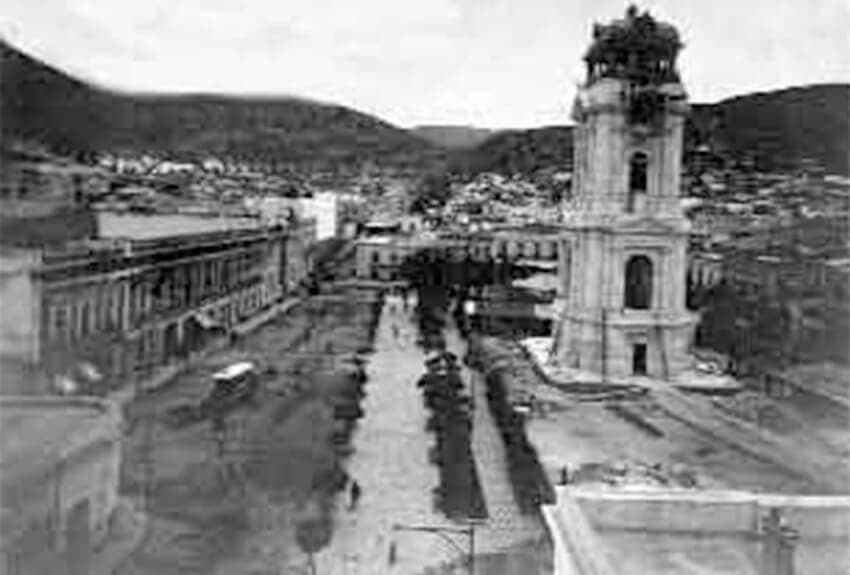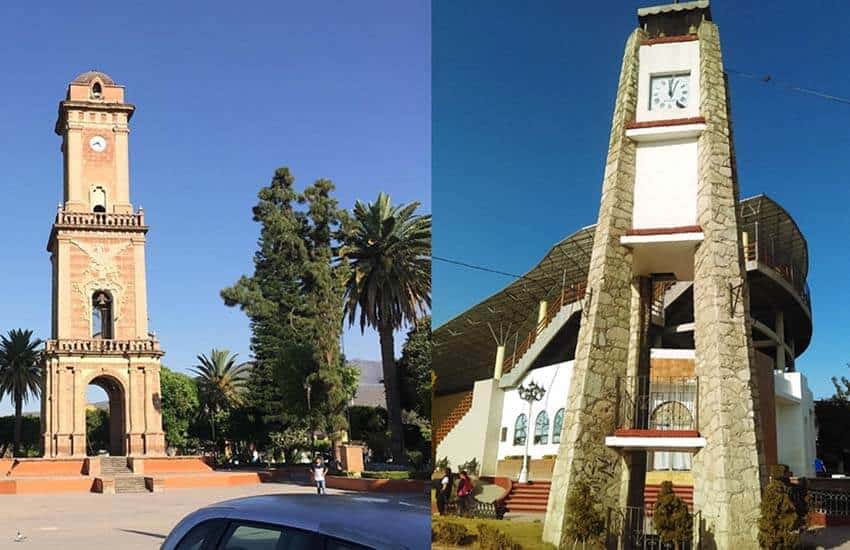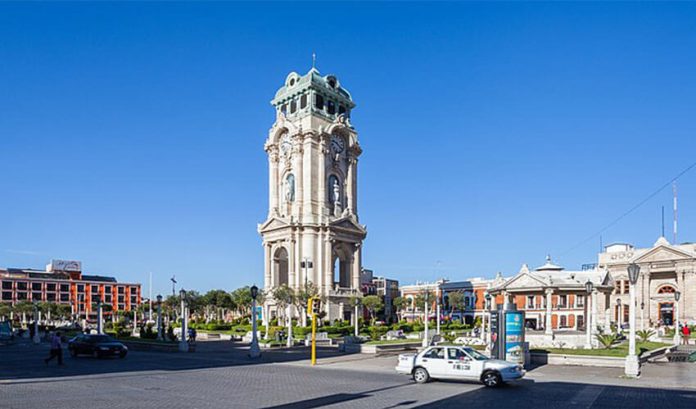If you have ever seen promotional materials about the city of Pachuca, Hidalgo, you have seen an image of its bright, white monumental clock dominating the main square. The clock tower is the pride of the city and the main symbol of its British heritage. So, where did it come from?
In the 19th century, British companies took over the area’s silver and other mines as Mexican companies had tapped them out with the technology previously available. Along with new techniques and machinery, the British companies brought over Cornish miners, who settled in Pachuca and the surrounding communities.
They also brought soccer, but that is another story.
Integrating themselves into their new town and country, the British community decided to build the clock in 1904 for Mexico’s upcoming 1910 independence centennial. Francis Rule, a mining magnate, provided the initial funding, and other area companies pitched in.

The resulting edifice was a 40-meter tall Neoclassical building in white stone. On the third level, there are marble statues related to the history of Mexico, but the clockworks were made in Europe to be an exact replica of those of London’s Big Ben.
Pachuca is not the only place in Hidalgo to boast of a monumental clock. As is common in Mexico, smaller communities follow the lead of those with economic, political and or social power. At least 10 exist in the state.
But the Pachuca clock was part of a first “wave” of clock towers in the state, which was prompted by a federal decree requiring cities and ports to construct some kind of monument for the independence centennial.
These clocks are made from tuff, an extremely common volcanic stone that has been used in monumental construction in central Mexico for centuries. The colors of this stone vary, depending on where it is mined.
In the north of the state, the small city of Huejutla constructed a clock at the same time as Pachuca. Inaugurated in 1908, it is technically the first monumental clock, but it is only half the height of Pachuca’s. Some sources say that the clock was inaugurated on the date of the centennial, September 15, 1910, but the municipality insists on the 1908 date.
Given their original patriotic purpose, both the Pachuca and Huejutla clocks play the Mexican national anthem at 6 p.m.
The clock tower in Tecozautla began construction around the same time, but because of the Revolution, the project was not completed until 1921. Interestingly enough, the Porfirian eagle, a symbol of the pre-Revolution regime, survived the turmoil and is still prominently displayed.
Similarly, the towns of Cuautepec de Hinojosa and Metzquititlán finished their clock towers in the 1920s. The Metzquititlán one is distinguished by a large bronze eagle cast in Mexico City.

These clocks became popular and symbolic of the towns in which they were constructed. The design and materials of these clocks also reflect the decades in which they were built.
The clock in Acaxochitlán is Art Deco in design with a mixed construction of brick, steel and cement. Locally mined tuff was used for the facade.
Due to a lack of records, it is not known when construction started or finished nor where or when the clockworks were purchased. The style and what little information exists point to a completion date of the early 1930s.
Most of the rest are of more recent construction. For Mexico’s independence bicentennial, the town of Atlapexco decided to build its own clock tower, finishing it in 2012. It is a very modern structure of block and cement, listing the names of all the communities in the municipality.

More recent additions include the clock built in 2017 in La Lagunilla, a small community outside the city of Tulancingo. Yet another was constructed in Pachuquilla, the municipal seal of Mineral de la Reforma, located just outside of Pachuca.
And then there’s the monumental clock of Jacala, a tiny town in Hidalgo’s portion of the Sierra Gorda Biosphere Reserve. It didn’t turn that many heads. It is of a simple, square design with a tile roof. Until recently it was painted in a drab two-tone color.
In 2020, the municipality decided to liven up the structure by doing something very Mexican: painting murals on the large, flat surfaces. Today, it is the first thing by far that draws the eye in the main square, presenting images of the town’s founder, its agriculture, its food and the local huapango dance. At 6 p.m., instead of the national anthem, a huapango song is played.
All these clocks were constructed in the main squares of their towns, with the express purpose of becoming community focal points; they are often the scene of civic and cultural events. For example, one of the highlights of Huejutla’s Xantolo festival is the lighting of hundreds of candles in front of the clock tower in the main plaza.
In most cases, these clock towers have also become symbols of their communities, regions and even the entire state of Hidalgo.
That said, the clocks do sometimes have problems with maintenance and the need for restoration. Just about all the older clocks have recently had work done — or are in need of it — on the facades, the clockworks or both.
Leigh Thelmadatter arrived in Mexico 18 years ago and fell in love with the land and the culture, in particular its handcrafts and art. She is the author of Mexican Cartonería: Paper, Paste and Fiesta (Schiffer 2019). Her culture column appears regularly on Mexico News Daily.
